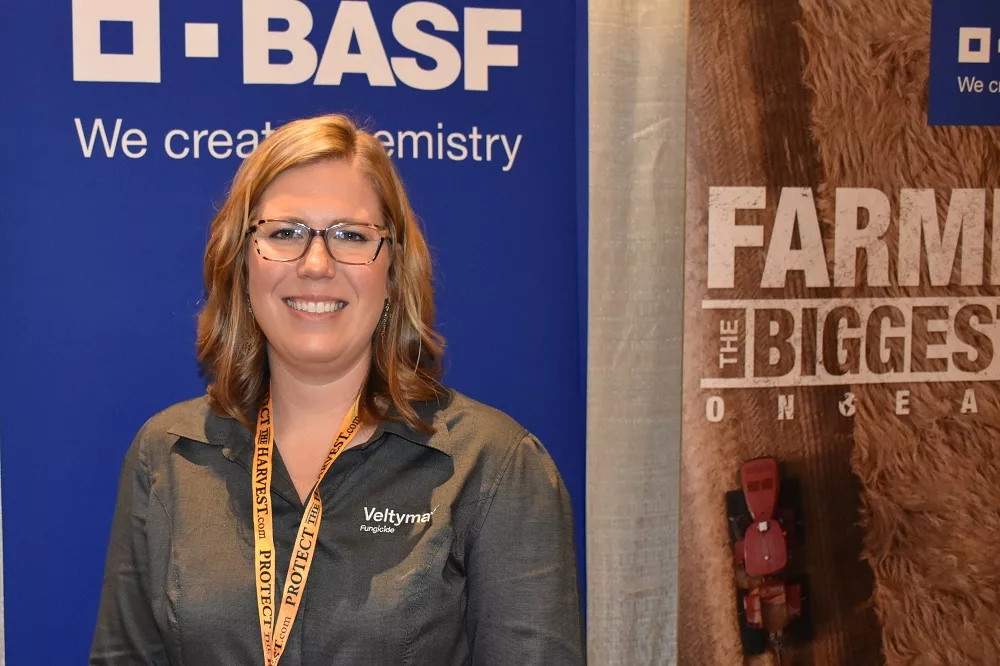Your browser doesn’t support HTML5 audio
So, how likely is it that tar spot makes another appearance in 2024? Since first coming on the scene in 2015, tar spot has continued to spread. It is now in more than nineteen states and the disease still spread in corn fields even during a very hot and dry 2023 season.
“It bled over into Nebraska and some other surrounding states,” says BASF’s Kim Tutor, technical marketing manager. “It’s as far south as Georgia and Florida and so it’s important to keep in mind when you think back to the disease triangle, you need three things for disease. You need the host. We’ve got lots of corn and soybeans, and tar spot, we’ve got a lot of corn. You need the pathogen. Well, we know it’s there because it overwinters in corn stubble, but the other reason tar spot’s problematic is it can blow in. So you can see infection not just from the bottom of the plant up from that overwintering of the pathogens, you can also see it in fact from the top of the plant down.”
Thirdly, environmental conditions need to be present for that disease outbreak.
“So in 2023 two of those three conditions were already met in the Midwest, and as soon as those certain pockets and certain geographies started getting rain, boom we had the disease. So I would say the potential is always there, it’s a matter of those environmental conditions. It just takes a little bit of change in those weather patterns. All you need is several hours of leaf wetness at night for that disease to take off.”
Because of a very long latent period for tar spot in corn, BASF recommends including a fungicide in your plans this year vs. waiting to see if the disease shows up.
“With tar spot it’s upwards of 14 to 20 days, so that’s almost 3 weeks that that disease is inside that plant depositing toxins and robbing it of its photosynthetic abilities, and that’s why if you take that wait and see approach, you’re trying to really I don’t know if I want to use one or not, you can’t, because by the time you’ve seen those lesions oftentimes it’s too late. You’ve already lost your yield potential.”
Tutor says BASF’s Veltyma is the best fungicide to control tar spot in corn.
“Veltyma has proven itself year over year,” she said. “In 8 out of 10 trials against competition it beats it. Compared to the untreated acre, 9 out of 10 trials it beats it. We have over a thousand field scale grower demonstration trials on revxfields.com Growers can go and visit and see how that product performs in their backyard.”
Hear more about fungicide plant health benefits in the full interview with Kim Tutor:
Your browser doesn’t support HTML5 audio

